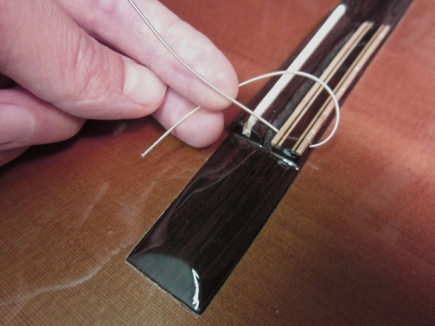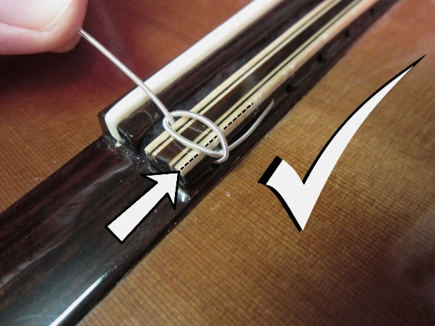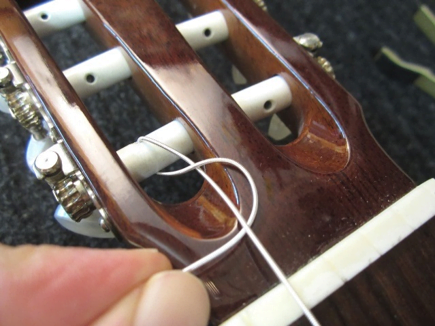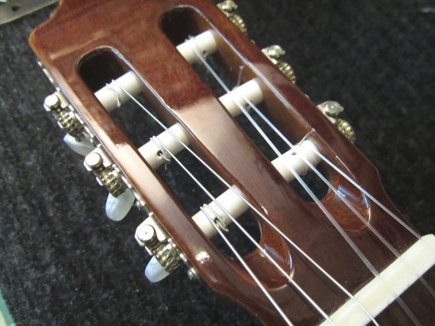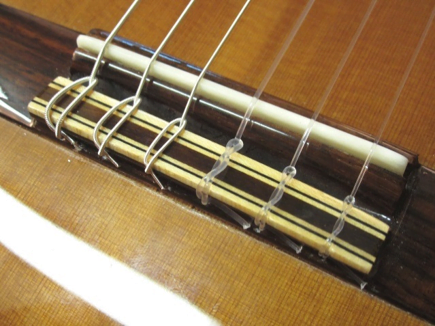- Home
- /
- Articles
- /
- Care & Maintenance
- /
- Restringing
- /
- How to Restring a...
Remove the Old Strings
Lay the guitar down and prop up the neck, so you have access to the tuners on the headstock. You can use a rolled-up towel if you don’t have a neck rest designed for the job. Starting with either the 6th or 1st string, loosen the string and remove it from string post.
Instructions
On classical guitars, the restringing process is entirely different from previously mentioned. I will demonstrate a useful tie and lock method that can be used on these kinds of guitars.
1. Pull the end of the string through the hole in the bridge then loop it back towards the neck.
2. Bring it under and then back around, and feed it into the loop just created.
3. Hold the loop at the very back edge of the bridge with one hand. With the other hand, pull the opposite end of the string so that the loop tightens into a knot.
To keep the string from slipping, the knot must tighten at the back edge of the bridge. If it slips out of place during the process, you can reposition it and try again. Once it is tied, you will need to keep constant tension on the knot so that it does not loosen off.
Feed the String Into the String Post
4. Now feed the other end of the string into the tuning post. You can create another knot here to avoid excessive string windings and to bring it to pitch quickly.
5. Bring the string back towards the nut and loop it around itself once.
6. Pull the string and the looped end, away from the string post to keep some back-tension on it. The knot will become tied as soon as you start winding it up.
7. Tune it up to pitch like this, keeping firm back-pressure on the string.
Treble Strings
For the treble strings, the process is similar, although you will loop not once, but twice both at the bridge and string post. The additional loop will help ensure the string does not slip or become untied.
Final Steps:
Stretch the Strings
Nylon strings have a tendency to stretch and lose pitch over a period of time. A new set of strings can stretch over several days to even weeks. To minimize this, we can stretch them constantly, until they stop losing pitch.
Grab the strings and gently pull up on it up and down the neck, retune and repeat. Once the string stops loosing pitch, stretching is complete- move on to the next. *Even though the image is of an electric guitar, the process is the same.
Lubricate the Nut Slots
Add some Vaseline, guitar nut lubricant, or pencil lead to the nut slots to further improve tuning and prevent binding at the nut.




